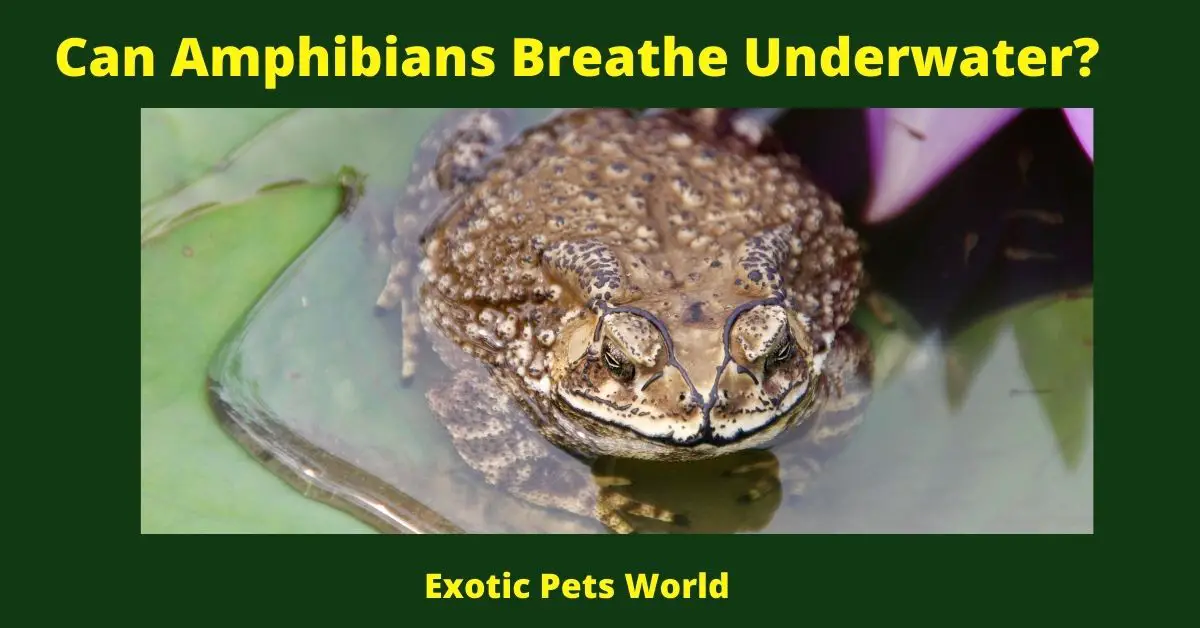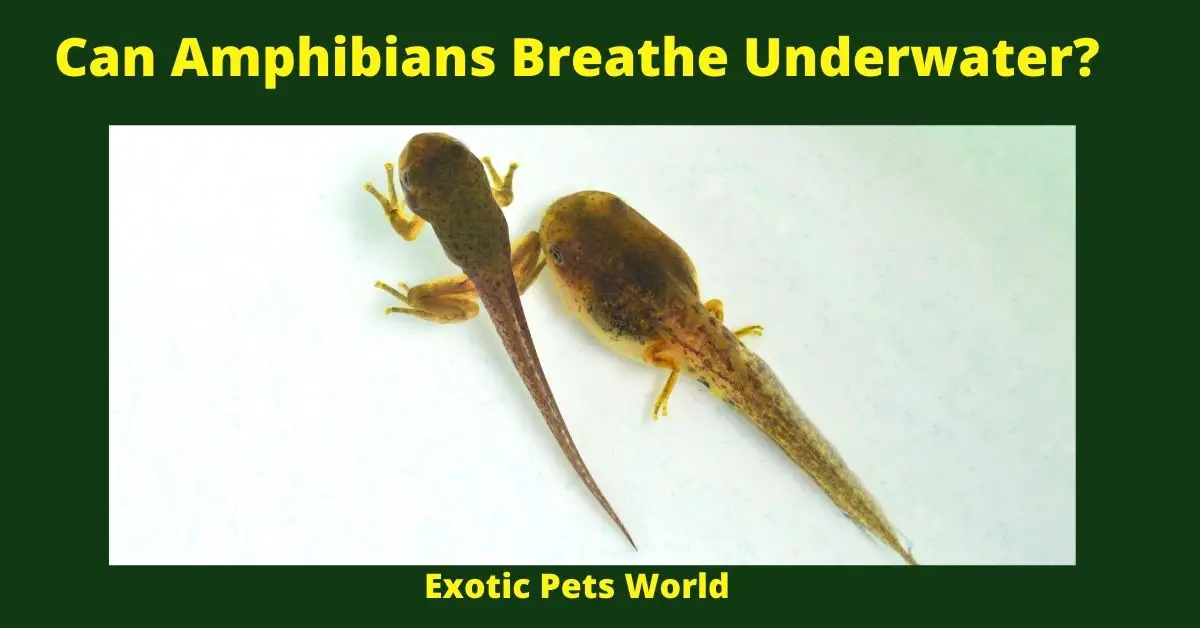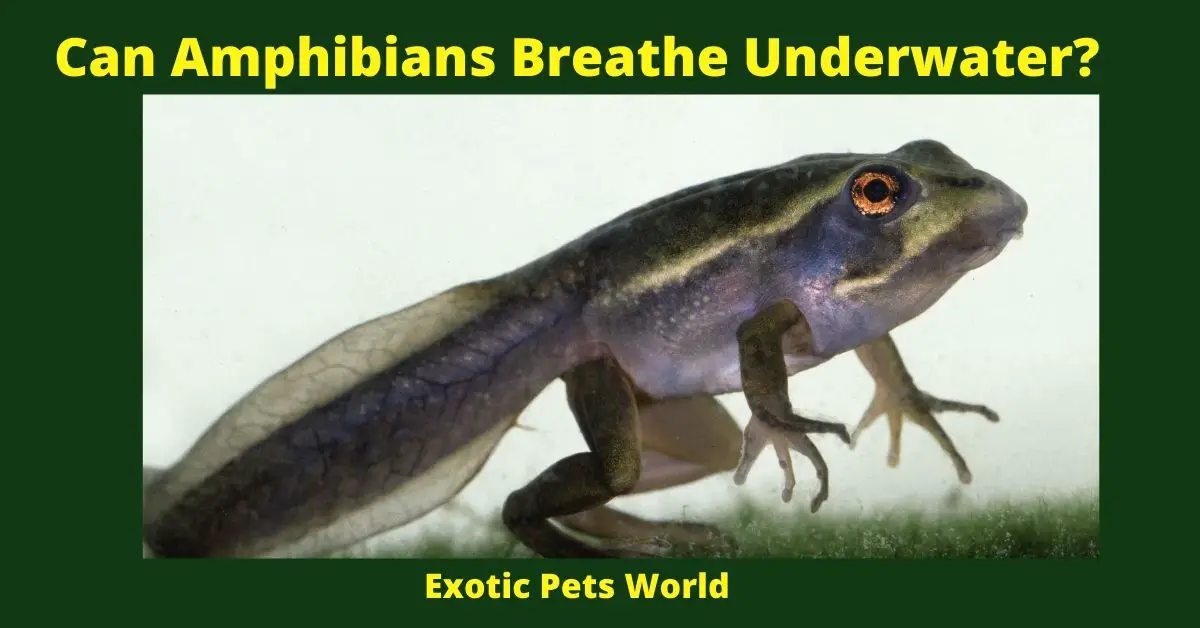Amphibians can breathe underwater, when juveniles they have gills, as they grow into adults they breathe through a process called Cutaneous respiration, They can absorb Oxygen through their Skin
Can Amphibians Breathe Underwater?
What if we told you that there is an animal that can breathe underwater? Believe it or not, amphibians have this ability! Frogs, toads, and salamanders are all able to take in oxygen through their skin when they are submerged in water. This allows them to live in both aquatic and terrestrial environments.
What is an Amphibian?
An amphibian is a creature that can live in water and on land. They are cold-blooded, which means their body temperature changes with the environment. There are three types of amphibians: frogs, toads, and salamanders. Amphibians have smooth skin and a wet slimy look. Some amphibians can climb trees, while others burrow underground. Can Amphibians Breathe Underwater?
Amphibians eat a variety of things, including insects, spiders, fish, and other amphibians. They are an important part of the food chain because they help control the populations of prey animals. Amphibians have been around for more than 350 million years and play an important role in the environment.
Some amphibians are endangered or extinct. One reason is that they can be infected with a fungus called chytrid. This fungus causes a disease called chytridiomycosis which can kill an amphibian within days. Habitat loss is another problem for amphibians. Development and deforestation destroy their homes and leave them vulnerable to predators. Conservationists are working to protect amphibians and their habitats.

How can Amphibians Breathe Underwater?
Amphibians have a number of adaptations that allow them to breathe underwater. One such adaptation is their gills, which extract oxygen from the water and allow them to live in aquatic environments.
Amphibians also have lungs, which they use when they are out of the water. Their lungs are specially adapted to extract oxygen from the air, allowing them to breathe even in terrestrial environments. Finally, amphibians can also absorb oxygen through their skin, which allows them to survive in moist environments where there is little or no air present. By using these different methods of respiration, amphibians can breathe underwater regardless of the environment they are in.
What is it called when amphibians breathe through their Skin?
Some amphibians, like the mudpuppy and the axolotl, can breathe through their skin. This is called cutaneous respiration. Cutaneous respiration allows these amphibians to live in water that has low levels of oxygen.
The skin of these amphibians is very thin and contains a large number of blood vessels. When the amphibian rests on the bottom of the pond or lake, its skin comes into contact with the water and takes up oxygen from the water.
The amphibian then uses this oxygen to power its metabolism. Cutaneous respiration is not as efficient as breathing air directly into the lungs, but it does allow these amphibians to survive in environments where there is little available oxygen.
What are the steps in Cutaneous respiration?
In amphibians, the skin is highly vascularized and functions as the primary site of gas exchange. The process of cutaneous respiration in amphibians can be divided into three main steps:
Step One: Diffusion of gases from the blood to the skin surface. Gases diffuse through the thin membrane separating the blood and tissue fluid, and then through the cells of the epidermis.
Step Two: Transport of gases across the cell membranes. Gases are transported across cell membranes by diffusion, which is determined by both the concentration gradient and the permeability of the membrane.
Step Three: Excretion of carbon dioxide from the skin surface. Carbon dioxide diffuses out of cells and escapes from the skin surface into air spaces in order to be exhaled.
Cutaneous respiration is an important process for gas exchange in amphibians and can be affected by a number of factors including temperature, humidity, and water availability. In addition, the skin can also serve as a site for thermoregulation and osmoregulation in these animals
How are the Lungs of Amphibians adapted?
The lungs of amphibians are adapted for life both on land and in water. Their lungs are more spherical than those of other animals, which allows them to remain submerged longer. Additionally, the walls of their lungs are thin and delicate, so they can easily take in oxygen from the water.
Amphibian lungs also have a large surface area relative to their size, which helps them absorb as much oxygen as possible. Finally, amphibian lungs contain a special substance called lung surfactant that reduces the surface tension of the air/water interface and makes it easier for the frog to breathe underwater.
Lung surfactant is produced by cells in the lining of the lungs and helps reduce the amount of energy needed to move gases between these two environments. This adaptation is critical for amphibians, as they must be able to breathe both in water and out of it. Without lung surfactants, they would not be able to survive for very long in either environment.
Amphibians also have a special system of blood vessels that helps them absorb oxygen from the water.
The way this work is that the amphibian’s heart pumps blood through a series of vessels that are close to the surface of their skin. This helps the frog absorb more oxygen from the water, which is important since they live in an aquatic environment.
In addition to this special system, frogs also have some adaptations that help them survive in water. For example, their skin is covered in tiny scales that create a water-repellent barrier. This helps keep the frog’s body dry and prevents it from getting weighed down by the water. Frogs also have webbed feet and long toes that help them move around easily in the water.
Finally, one other thing worth mentioning about frogs is their reproductive cycle. Most frogs lay eggs, but there are a few species that give birth to live young. When these are born life, they are called tadpole frogs. Tadpoles are very different from adult frogs, and they have a number of unique adaptations that help them live in water. For example, they have gills that allow them to breathe underwater, and their tails help them swim quickly through the water. As they grow older, tadpoles gradually lose these features and eventually become adults.
What is the Life Cycle of Amphibians?
The amphibian life cycle is unique in that they can live both on land and in water. Amphibians go through four distinct stages during their life cycle: egg, larva, juvenile, and adult.
- Eggs – Amphibians lay eggs, and the eggs hatch into larva.
- Larva – Larva is aquatic creatures that live in water and breathe through gills. They undergo a number of changes as they grow older, eventually becoming juveniles.
- Juvenile – Juveniles are amphibians that have stopped growing and resemble adults in many ways. They can live on land or in water, depending on the species.
- Adult – Adult amphibians are fully-grown animals that can reproduce. Some species return to water to mate and lay eggs, while others stay on land.
- As you can see, amphibians have a very interesting life cycle that allows them to thrive in both aquatic and terrestrial environments.

Amphibians Benefits for the Environment Are:
- They help reduce the population of insects.
- Amphibians feed on mosquitoes, which helps to control the spread of diseases like malaria
- They are effective in controlling pests that can damage crops.
- Their skin secretions act as a natural mosquito repellent.
- They help to maintain the ecological balance in their habitat.
Final Thoughts – Can Amphibians Breathe Underwater?
In Summary, Amphibians play an important role in the environment and their benefits should not be underestimated. They help to control the population of insects, feed on mosquitoes which help to control the spread of disease, and are effective in controlling pests that can damage crops. Their skin secretions also act as a natural mosquito repellent. Amphibians help maintain the ecological balance in their habitat, making them an essential part of the environment.

Wow! This blog looks just like my old one! It’s on a completely different subject but it has pretty much the same page layout and design. Excellent choice of colors!
Woah! I’m really loving the template/theme of this website. It’s simple, yet effective. A lot of times it’s tough to get that “perfect balance” between usability and visual appeal. I must say that you’ve done a excellent job with this. Also, the blog loads very quick for me on Opera. Outstanding Blog!
Woah! I’m really digging the template/theme of this blog. It’s simple, yet effective. A lot of times it’s challenging to get that “perfect balance” between superb usability and appearance. I must say that you’ve done a very good job with this. Additionally, the blog loads super fast for me on Chrome. Excellent Blog!
In the great scheme of things you’ll get a B+ for effort and hard work. Exactly where you lost me was in your particulars. You know, it is said, the devil is in the details… And that could not be much more accurate here. Having said that, allow me inform you what exactly did deliver the results. Your article (parts of it) is certainly very persuasive and that is most likely why I am making the effort in order to opine. I do not make it a regular habit of doing that. 2nd, although I can notice a jumps in reason you make, I am not convinced of how you seem to unite your points that make your conclusion. For right now I shall subscribe to your issue but hope in the foreseeable future you actually connect the dots much better.
Good day! I could have sworn I’ve been to this website before but after browsing through some of the post I realized it’s new to me. Nonetheless, I’m definitely happy I found it and I’ll be bookmarking and checking back frequently!
Hey there! I could have sworn I’ve been to this site before but after reading through some of the post I realized it’s new to me. Nonetheless, I’m definitely delighted I found it and I’ll be bookmarking and checking back frequently!
When I initially commented I clicked the “Notify me when new comments are added” checkbox and now each time a comment is added I get several emails with the same comment. Is there any way you can remove me from that service? Thank you!
There are definitely a number of details like that to take into consideration. That is a great level to bring up. I provide the thoughts above as general inspiration but clearly there are questions like the one you carry up the place an important thing shall be working in sincere good faith. I don?t know if best practices have emerged around issues like that, however I am sure that your job is clearly identified as a fair game. Both girls and boys feel the affect of just a second’s pleasure, for the remainder of their lives.
Very interesting subject , appreciate it for posting.
This website was… how do I say it? Relevant!! Finally I’ve found something which helped me. Appreciate it!
This website was… how do you say it? Relevant!! Finally I have found something which helped me. Thanks!